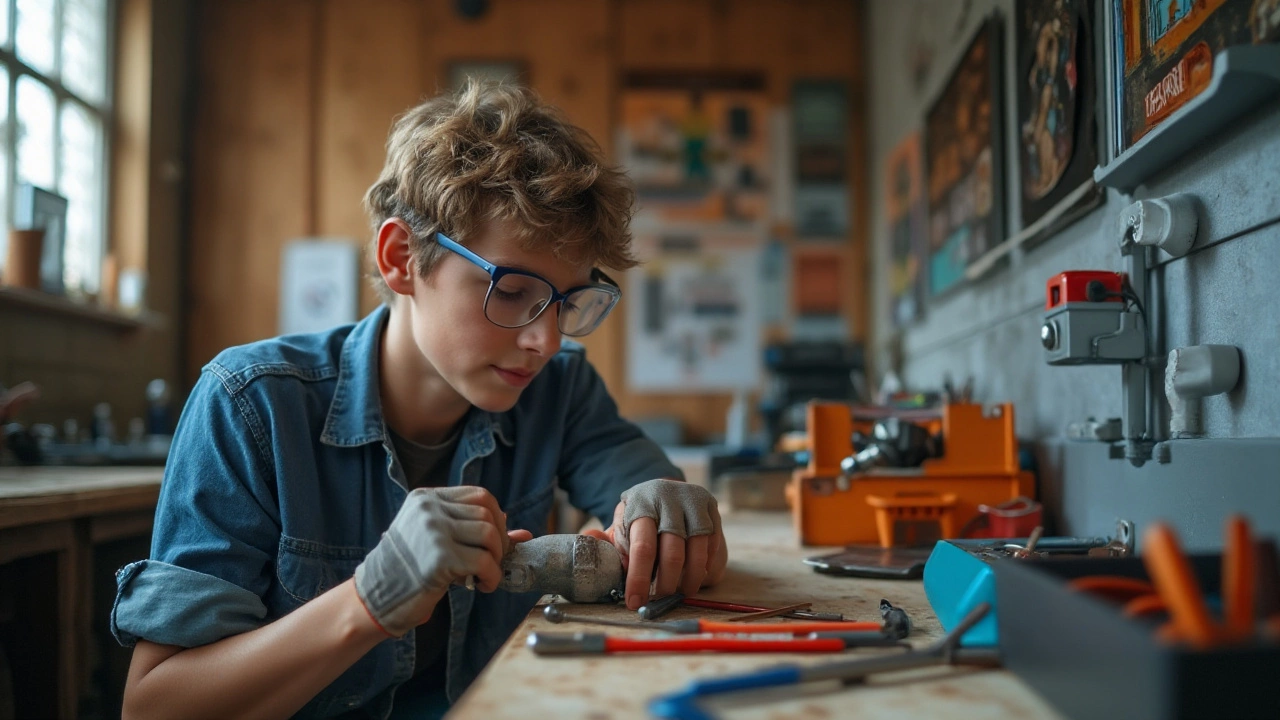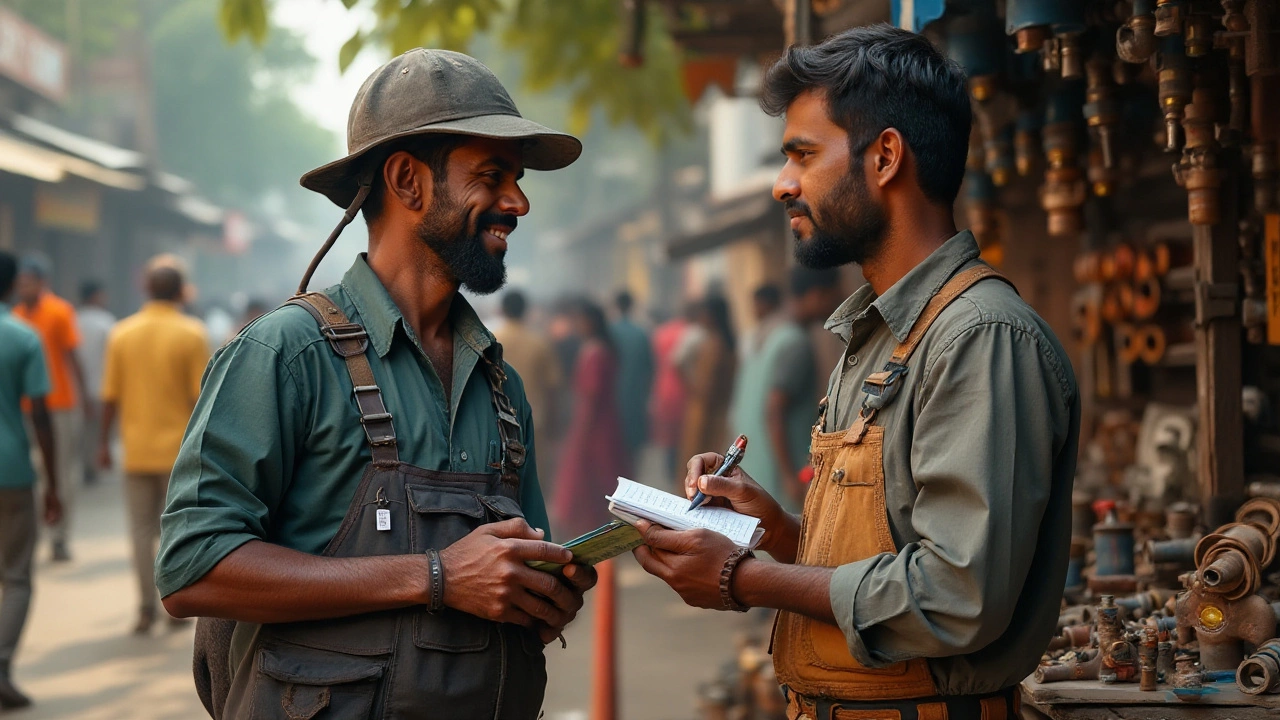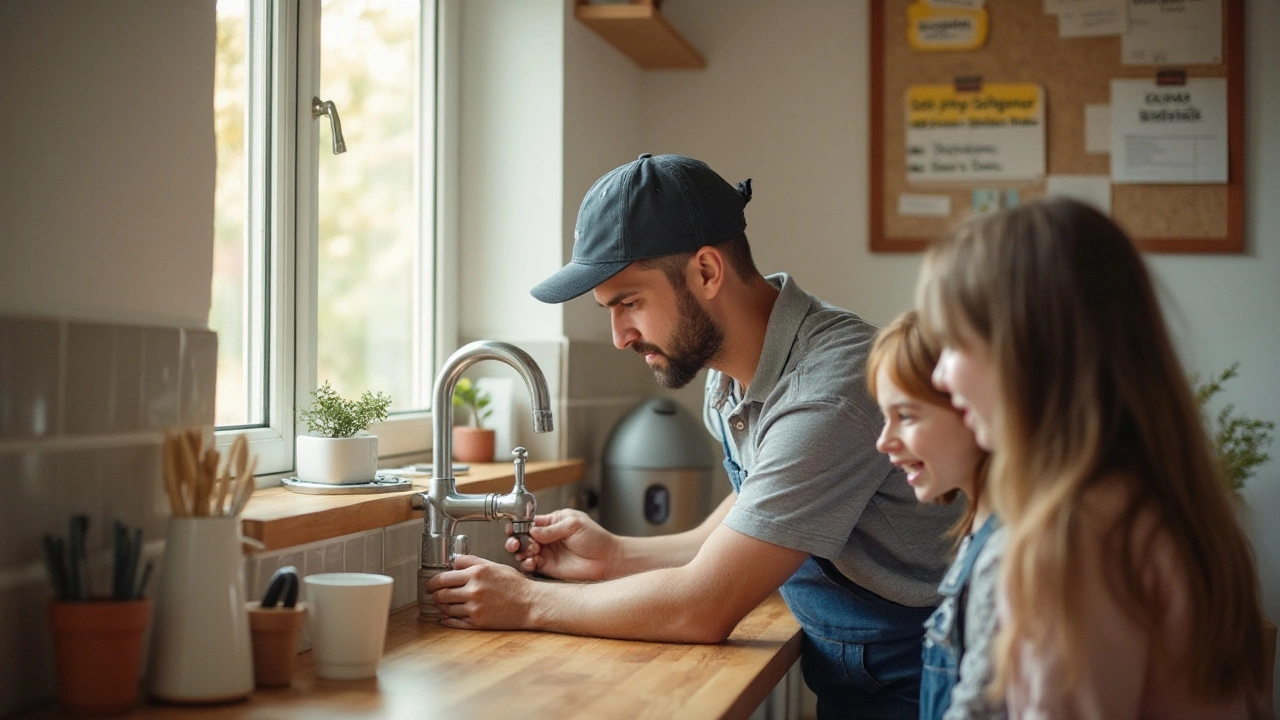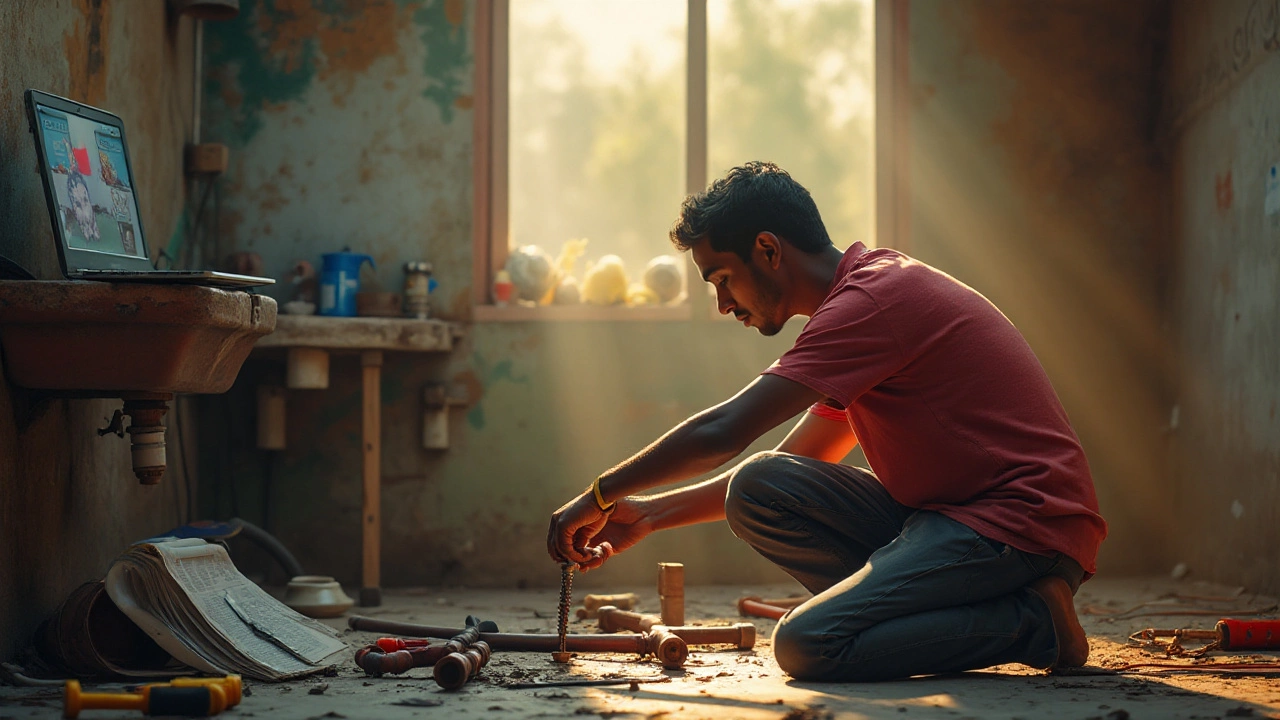Diving into the world of plumbing can seem daunting at first, especially for those considering the self-taught route. Yet, with the right guidance, a little patience, and a knack for problem-solving, it's entirely possible to acquire the fundamental skills of plumbing without setting foot in a classroom.
Understanding the basics lays the foundation for any aspiring self-taught plumber. Familiarizing yourself with the components and systems such as pipes, fixtures, and drainage can be the stepping stones in this self-driven pursuit.
Arming yourself with essential tools and materials is key. Knowing what you need in your toolkit and how to use each item effectively can make a significant difference in both efficiency and safety.
Speaking of safety, plumbing isn’t without its hazards. It's crucial to be aware of potential risks and adhere strictly to safety guidelines to protect yourself and your home.
Luckily, we live in an age where information is at our fingertips. From online tutorials, detailed guides, forums, and community workshops, a wealth of resources is available to guide your self-study. It's about tapping into these resources and embracing a mindset geared towards continuous learning.
- Understanding the Basics
- Essential Tools and Materials
- Safety Precautions
- Practical Learning Resources
Understanding the Basics
Diving into the essentials of plumbing requires an appreciation of its core components and principles. Plumbing is not just about piecing pipes together; it's a complex network that ensures the seamless flow of water in and waste out of a home. Recognizing this complexity can prevent hasty decisions that might lead to errors. One fundamental concept is the understanding of plumbing systems, which can be divided into two basic types: the water supply system and the drainage system. Both systems require unique approaches, different skills, and specific maintenance, which is why starting with the very basics is invaluable for any aspiring self-taught plumber.
The water supply system is responsible for delivering clean water to your home. This system is pressurized and relies on valves to regulate the flow and pressure of water. Knowing how to control this system can protect you from significant damage such as leaks or bursts. In contrast, the drainage system uses gravity. Its main function is to remove wastewater from your home. This system doesn't need pressure since it relies on a downward slope for natural flow. Unveiling the intricacies of these systems forms a strong foundation for tackling any plumbing task without formal training.
A vital step for any budding plumber is to familiarize themselves with various types of pipes and fittings. Materials such as copper, PVC, and PEX are commonly used, each having its own suitability based on the specific plumbing needs of a property. Mastering these materials involves learning their advantages and limitations. Copper pipes, for example, are durable and resistant to corrosion, while PVC is simple to install and cost-effective. On the other hand, PEX offers flexibility and ease of installation in tight spaces. Choosing the right material can affect the efficiency and longevity of any plumbing job you undertake as a DIY plumber.
Comprehending the role of fixtures in plumbing systems is equally significant. Fixtures include sinks, toilets, bathtubs, and their underlying mechanisms such as shut-off valves and traps. A thorough understanding of these fixtures can mitigate unexpected complications. For instance, the S-trap or P-trap, which prevents sewer gases from entering a home, is a critical component to grasp. Recognizing how these parts interconnect can equip you with the wherewithal to diagnose problems and perform simple repairs on your own.
"Learning never exhausts the mind." - Leonardo da Vinci; This famous quote reminds aspiring plumbers that expanding one's knowledge in plumbing isn't just tangibly rewarding but fulfilling as well.
Tools for Understanding Plumbing Systems
Another key aspect of understanding the basics of plumbing skills is having the right tools at your disposal. It's not just about having them but also about understanding how and when to use each one. Tools specific to plumbing include pipe wrenches, pliers, and plumber's tape, each playing a crucial role in ensuring your repairs and installations are secure and effective. The pipe wrench, for instance, is designed to grip and turn pipes, often in tight spaces, which would otherwise be impractical with standard wrenches. Knowing the importance of these tools paves the way for successful plumbing DIY projects.
Patience and practice are equally crucial in plumbing as technical knowledge. Even experienced plumbers continually broaden their skills through experimentation and hands-on work. Embracing mistakes as learning opportunities can accelerate your understanding. It's about gradually building up your confidence and skill level over time. Plumbing, by nature, requires attention to detail, structured problem-solving, and, most importantly, persistence. By nurturing these disciplines, you'll find yourself solving plumbing dilemmas with more efficiency and assurance.

Essential Tools and Materials
Embarking on a journey to become a self-taught plumber involves more than just acquiring theoretical knowledge; you need to gather the right tools and materials that are vital to execute practical plumbing tasks effectively. While the world of plumbing may seem laden with complex tools, building a strong foundational toolkit is straightforward and crucial for any budding DIY plumber. To start, investing in a versatile pipe wrench is key. This adjustable tool is indispensable, its grip ensuring you can easily twist and tighten pipes of various sizes. Pair that with a set of pliers—specifically tongue-and-groove pliers—and you're prepared to tackle fittings and loosen stubborn nuts with ease and precision.
No toolkit should be without a reliable adjustable spanner; its role in working with hex sizes of different measurements cannot be underestimated. Meanwhile, a plumber's tape is one of those unsung essentials, providing a surefire seal that prevents leaks and avoids potential water damage. Next, pipes require cutting, thus a dedicated pipe cutter, designed to slice through metallic and plastic plumbing with care, is imperative. Beyond the tools, the importance of a quality spirit level cannot be ignored, as it ensures that every installation is exact, preventing issues down the line that often stem from improperly aligned pipes.
"Having the right tools is half the battle. It's like a chef with the perfect knife—they can cook the best omelet without one, but it might not look as pretty," remarks Michael Stevens, veteran DIY enthusiast and author of 'Artisan Plumbing: Skills for Home'.
The materials you work with are equally as critical as the tools. Pipes and fittings made from copper, PVC, or even PEX each bring something different to the table, depending on your home's requirements and your level of experience. PVC is often preferred by beginners for its ease of use and flexibility. It's also vital to keep a stock of washers and O-rings; these small items are the unsung heroes of plumbing skills, creating those essential seals in taps and preventing leaks in surprising places. You also can't go wrong with a reliable soldering kit if you plan to work with copper piping, ensuring joints are seamless and watertight. It's all too easy to overlook the role of sealants, but a silicone-based variety offers durability and resistance to mold, a winning combination in wet environments.
For those especially keen to ensure their plumbing tasks go off without a hitch, bundling your efforts with some innovative gadgets could be beneficial. A simple yet ingenious tool, the hand auger, lets you clear clogs without resorting to harsh chemicals, while digital meters measure water pressure, helping you save time troubleshooting issues. Consider how these plumbing DIY solutions can not only save time but also prevent future headaches, making the investment in proper materials and tools a wise, future-proof decision. Putting considerable thought into this early stage will ultimately enhance your ability to learn efficiently and work safely, inspiring confidence as you refine your craft.

Safety Precautions
Embarking on your journey as a self-taught plumber means taking responsibility for your safety and those around you. Even if you're only tackling domestic projects, awareness of potential hazards is paramount. At the heart of every successful job is a solid understanding of the environment you're working in, and a preparation protocol that anticipates problems before they occur.
Before commencing any plumbing task, conducting a thorough inspection of the site is crucial. Check for existing damages, potential leaks, or wiring issues. Familiarize yourself with shut-off points for water, gas, and electricity to prevent any mishaps. Knowing how to quickly stop the water supply or deal with a potential electrical hazard can mitigate damage and protect both life and property. One cannot underestimate the importance of a dry work environment when handling water-related tasks.
Personal safety gear is your first line of defense against injury. Equip yourself with goggles to guard against debris, and gloves to shield your hands from sharp objects and harsh chemicals. Protective clothing, such as steel-toed boots, can prevent accidents when carrying heavy tools or equipment. Many experienced craftsmen swear by these essentials not just as precaution, but as invaluable assets that ensure a smooth, incident-free job.
"Success in plumbing isn't just about skills or tools; it's about respecting the work and its inherent risks," advises John M. Davis, a seasoned professional with over two decades in the field.
Understanding the tools specific to plumbing is not only about application, but also about safe handling. Take the time to familiarize yourself with any new equipment, reading manuals or watching tutorials if necessary. Incorrect use of power tools and sharp cutters can lead to severe injuries. For newbies, developing a habit of double-checking tool settings and secure placement can be lifesaving.
Potential Hazards & Solutions
Beyond personal safety, plumbing tasks often deal with factors like mold, bacteria, and biohazards, especially in older buildings or neglected systems. Respiratory protection may be needed when cutting through materials likely contaminated with mold spores or asbestos. This is particularly important in ensuring long-term health, as exposure to such elements can have cumulative adverse effects.
Aword of caution about chemical use: Drain cleaning substances are notorious for being corrosive. When using these chemicals, follow the manufacturer's instructions to the letter. Ventilate the space to avoid inhaling toxic fumes, and if mixing is required, do so in recommended quantities to prevent creating dangerous reactions.
Lastly, taking regular breaks can prevent fatigue-induced errors. Plumbing may require awkward postures and repetitive motion which can strain your muscles. Intervals of rest and hydration are equally important safety measures for maintaining focus and preventing accidents from tiredness or loss of concentration.
| Hazard | Preventive Measure |
|---|---|
| Water Leaks | Know shut-off locations; inspect pipes frequently |
| Chemical Exposure | Use proper ventilation; follow instructions |
When approached with diligence, plumbing DIY projects can be rewarding ventures that not only solve immediate issues but also build valuable know-how. The key is a cautious, knowledgeable approach to every task, recognizing that each success is predicated on preparation and awareness.

Practical Learning Resources
Navigating the landscape of self-education in plumbing requires embracing a variety of practical learning resources. The digital age has remarkably democratized learning, turning curious individuals into adept self-taught plumbers thanks to an impressive array of resources. A great starting point for many is online courses, where platforms like Udemy and Coursera offer a plethora of classes specifically tailored to highlight everything from basic plumbing skills to advanced techniques.
Beyond structured courses, the internet is teeming with instructional videos that can be exceptionally beneficial. YouTube, for example, hosts channels dedicated to the art of plumbing, where professionals offer walkthroughs on complex projects. Not only do these videos provide visual insight, but they often address common pitfalls and mistakes, providing a deeper understanding of the craft. Attempting to replicate these projects can foster a hands-on learning experience that is invaluable.
Forums and online communities are another cornerstone of the learning ecosystem. Joining forums like Reddit's plumbing subreddit or participating in discussions on specific DIY platforms can provide both support and technical advice from other enthusiasts and professionals. Here, one can pose questions, share experiences, and glean insights from a global pool of plumbing enthusiasts. According to a user on a well-visited forum, "The community here is invaluable for tricky questions that come up unexpectedly during projects."
The traditional route of books shouldn’t be overlooked either. Comprehensive guides and manuals, whether digital or paperback, offer detailed explanations and step-by-step problem-solving strategies. Notable titles like "The Complete Guide to Home Plumbing" can serve as a reliable reference during any plumbing venture. For the more tactile learners, these resources complement practical tasks well, breaking down concepts into digestible segments.
In certain cases, participating in local workshops or volunteering as an assistant in community projects can provide experiential learning opportunities. Hands-on workshops often simulate real-world scenarios, giving you a taste of professional plumbing's dynamic nature. Volunteering with charities aimed at improving community infrastructure can also be a rewarding way of honing your skills whilst giving back.
Finally, incorporating practice with theory is essential. Whether practicing on old fixtures at home or creating a simulated plumbing setup, these exercises reinforce what you've learned through books and videos. Keeping a detailed journal of your learning journey, noting down specific challenges and breakthroughs, can help consolidate your knowledge and serve as a personal guide for future reference. It's crucial to remember that while resources are abundant, consistency and practical application will ultimately transform a curious learner into a proficient plumbing expert.
